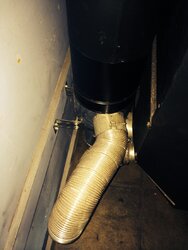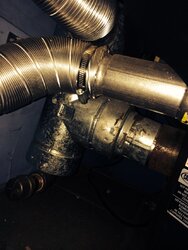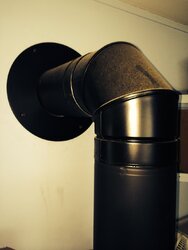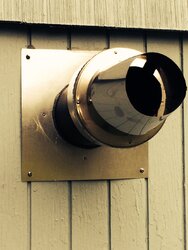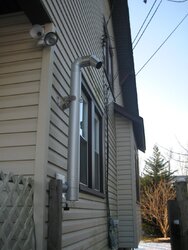Hi, I'm sorry if this is a re-hash as it seems a common question, but I tried the search and just couldn't put together the right terms to come up with anything to answer my question.
My wife and I are building a home and are pretty well decided on the Harman XXV for our great-room. We went to two different dealers and got different answers on how best to vent it.
One of them insisted that most of their customers just to direct vent, out the back, through the wall. He said if we wanted to turn and come 6 - 9 feet vertically for draft, that would be fine.
The other fellow insisted that the best option was to put the top vent kit on the unit and come up inside the house that same rise, then turn 90 degrees and go through the wall after the rise with a horizontal termination outside.
Asthetically, neither my wife nor I have any preference we could be happy with seeing the pipe or not, doesn't really matter. Just looking for the best performance and utility. I should add the OAK is a must in either case.
Any strong reason to go one way or the other in this case?
Thanks, the reviews and threads in the forum were incredibly valuable in helping us decide which stove to purchase. It came down to the Harman XXV and the Quadrafire Mt Vernon, and I suspect we would have been happy with either, but the Harman dealer was much more friendly and made me feel better about service after the sale and that really sealed the deal.
Thanks in advance!
My wife and I are building a home and are pretty well decided on the Harman XXV for our great-room. We went to two different dealers and got different answers on how best to vent it.
One of them insisted that most of their customers just to direct vent, out the back, through the wall. He said if we wanted to turn and come 6 - 9 feet vertically for draft, that would be fine.
The other fellow insisted that the best option was to put the top vent kit on the unit and come up inside the house that same rise, then turn 90 degrees and go through the wall after the rise with a horizontal termination outside.
Asthetically, neither my wife nor I have any preference we could be happy with seeing the pipe or not, doesn't really matter. Just looking for the best performance and utility. I should add the OAK is a must in either case.
Any strong reason to go one way or the other in this case?
Thanks, the reviews and threads in the forum were incredibly valuable in helping us decide which stove to purchase. It came down to the Harman XXV and the Quadrafire Mt Vernon, and I suspect we would have been happy with either, but the Harman dealer was much more friendly and made me feel better about service after the sale and that really sealed the deal.
Thanks in advance!


